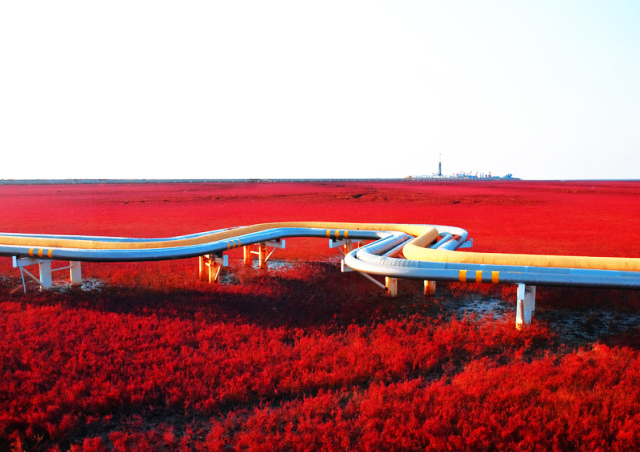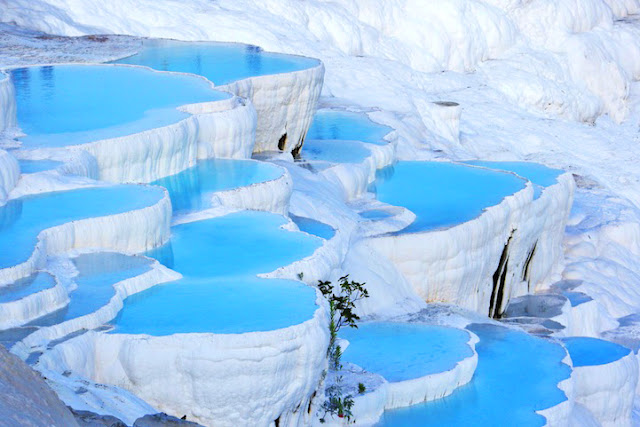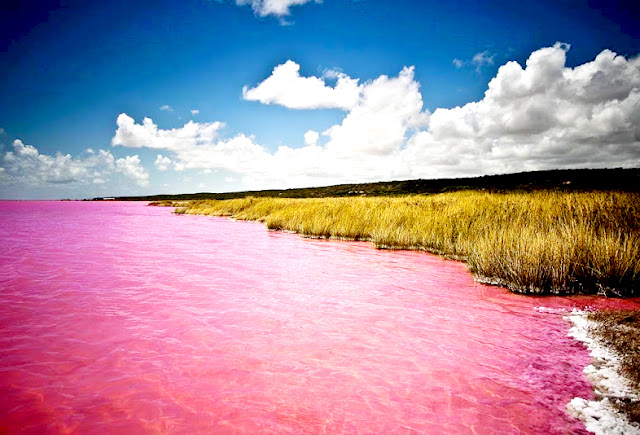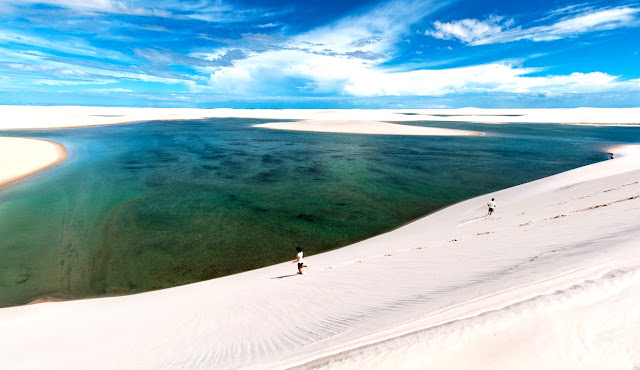You must have heard of the Grand
Canyon, the Galapagos Islands, and Venezuela’s Angel Falls; you’ve probably
even heard of more obscure natural wonders such as the needle-like rock forests
at Tsingy de Bemaraha. But no matter how much of the Earth we cover, there’s
always something breathtaking just around the bend. Today we have come up with
a list of some of the most ambiguous oddities in the world, totally unheard of,
that are sure to take your breath away. Sit tight, folks, as you are about to
step into a world that you take will leave you with awe as you make the
progress.
Kirkjufell Mountain
Iceland is home to some of the
most exquisite natural marvels from around the world, and the Kirkjufell
Mountain fits perfectly into this category. Best known for stunning pictures
brought back by tourists, Kirkjufell is a photogenic mountain with three
picturesque waterfalls running into a crystal clear stream at the mountain’s
foot. Shapes into a perfect portrait of idyllic Iceland; the Krikjufell
Mountain also plays its part as one of the best places to view the heavenly
Northern Lights.
Cano Cristales
Not known to many, the Cano
Cristales, tucked neatly away in the mountains of Colombia, is a gem of a river
popular among the locals as the “River of Five Colors”. Only accessible by
airplanes, you would want to visit this natural oddity during summers when the
heat brings out the most vibrant shades of red. The colors of the river water
come from a combination of algae, the natural hue of river rocks and of course,
the blue of the water itself. Interested in seeing some of the oldest rocks in
the world, as well? The Guiana Shield within the Cano Cristales (about 1.2
billion years old) will fulfill this desire of yours.
Taylor Glacier
The Antarctic Taylor Glacier vomits
a continuous stream of iron-rich hyper saline water onto the surrounding snow.
The glacier was discovered in 1911 by an explorer named Thomas Griffith Taylor,
who surmised that the reddish tint was caused by an unknown form of bacteria.
It wasn’t until much later that we found the real reason for the spring of
blood-colored water—an ancient underground pool of saltwater about 400 meters
(1,300 ft) below the surface of the ice. The iron-rich water squeezes its way
up through a fissure to the surface and comes in contact with oxygen for the
first time, the iron hydroxide reacts instantly, giving us a waterfall of
rust—the Blood Falls.
Beppu Hot Springs
Beppu, Japan is one of the world’s hot spring hot spots; there are more than 2,500 springs in the area—the
second largest such cluster in the world. The springs are colloquially known as
the “Eight Hells,” since there are eight main areas, each producing a unique
type of spring. Blood Pond Hell, pictured above, is saturated with iron, giving
both the water and the steam a dark reddish tint. Some of the other Hells
include Demon Mountain Hell, which houses about 80 crocodiles; White Pond Hell,
which contains boric acid that gives the water a milky consistency; and Oniishi
Shaven Head Hell, which is a mass of bubbling mud that—supposedly—resembles the
shaven heads of monks rising to the surface.
Spotted Lake
The Okanagan Valley lies at the
extreme southern border of British Columbia. For thousands of years, aboriginal
tribes have lived and battled in the valley, and their legends remain to this
day. One of their most prominent legends told of a battle that occurred in the
hills around Spotted Lake—then known as Khiluk to the First Nations of the
region. There are high concentrations of 11 different minerals, including
calcium and magnesium sulfate, and some trace amounts of titanium and silver.
In the summer, when the lake partially evaporates, the minerals precipitate
into rounded “holes.” Each hole takes on a different color, depending on which
minerals are more concentrated in that particular spot.
Panjin Red Beach
This gorgeous crimson landscape is located in China, near the city of Panjin. It’s situated in the middle of an
immense, sprawling wetland area in the Liaohe River Delta, but it’s the only
part of the wetland that takes on this vibrant coloration. Rather than sand,
the beach is covered with a highly alkaline soil, which is too basic for most
plants to live on. That leaves little competition for the Suaeda salsa, a
species of seaweed that has completely taken over the 1.4 million acres that
make up Red Beach. In the summer, the seaweed is a dark green color—pretty but
not exactly breathtaking. But in autumn, the mature plants take on a fiery red
color that turns the beach into a one-of-a-kind spectacle. Most of the beach is
closed to visitors in an effort to protect the delicate ecosystem, but there’s
a small section that’s open to tourists.
Pamukkale’s Travertine Pools
One of the most unique sights in
the world is, without a doubt, the cliffside travertine pools in Pamukkale,
Turkey. Travertine is a type of limestone that’s found in a lot of the world’s
hot springs. When the spring reaches the surface, the travertine solidifies
into stepped structures that hold the spring water. The pools are initially
formed from soft calcium carbonate that later solidifies into travertine.
Because of the high calcium content, the end result is a hillside that’s white
as snow.
Zhangye Danxia
The Zhangye Danxia Landform
Geological Park is located in southwest China and contains more than a few
unusual features. Probably the most startling are the multicolored mountains
known as Danxia landforms. The surreal coloration comes from red sandstone and
natural mineral deposits that have formed over the course of 24 million years.
Each “stripe” constitutes a different mineral, and over the ages, they’ve
formed layer upon layer, resulting in a rainbow pattern. Erosion from wind and
rain has further polished the surfaces of the mountains. China is the only
place in the world with this type of mineral formation, and a few of the
landforms have become UNESCO World Heritage Sites.
Lake Retba
There are a handful of names that
have been given to this lake, some by locals and some by visitors, but they all
essentially mean the same thing: “The Pink Lake.” Lake Retba is located in
Senegal, and it’s only separated from the Atlantic Ocean by a thin strip of
sand dunes. Because of that slight geographic separation, a species of algae
called Dunaliella Salina has been able to proliferate in the lake’s warm
waters. Found only in a few places in the world, Dunaliella algae are salt
lovers—which is good, because Lake Retba is as salty as the Dead Sea. The
saltier the lake gets (particularly in the dry season), the deeper the red
gets. During particularly dry seasons, the lake will take on a hue that can
only be described as “bloody.”
Lencois Maranhenses
An oasis in the middle of the
desert makes a pretty picture, but they’re few and far between in most of the
world’s arid regions. Lencois Maranhenses National Park, on the other hand, is
absolutely peppered with them. Located in northeastern Brazil, this sand-covered,
155,000-acre park isn’t actually a desert, even though it looks like one.
When
the rainwater collects between the dunes, it forms thousands upon thousands of
separate lagoons that stretch as far as the eye can see. Each lagoon functions
as a completely unique ecosystem. Despite the lack of inlets or outlets, many
of the standalone lagoons are filled with fish that were carried to the pools
as eggs by seabirds.
























0 comments :
Post a Comment